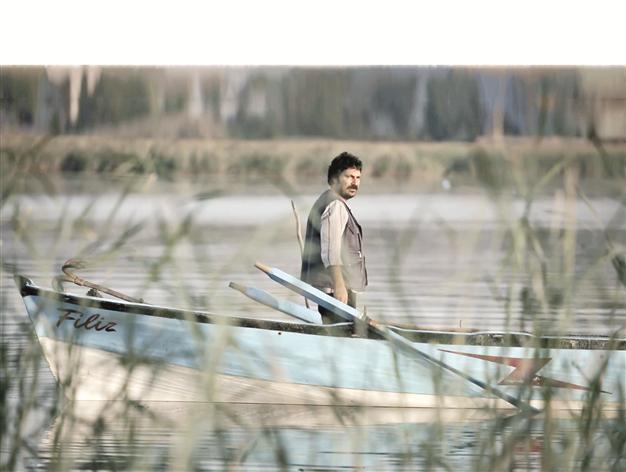Auteur Derviş Zaim returns with an ode to nature
Emrah Güler

The story of ‘Balık’ revolves around Kaya, a fisherman desperate for a little money in the face of a changing world that threatens the balance of nature.
For almost two decades now, Turkish-Cypriot director Derviş Zaim’s cinema has always been one of a true auteur’s. Zaim presents a distinctive cinema that has always been uniquely his own. His fascination with the individual’s relationship with society, with tradition, with history, and with nature has left its mark on his award-winning features since his inspiring debut “Tabutta Rövaşata” (Somersault in a Coffin) in 1996.

Director Derviş Zaim
Zaim returns this week with “Balık” (Fish), starring Sanem Çelik and Bülent İnal, two actors with whom the director has worked in previous films. “Balık” is the second in a trilogy, the first film being last year’s “Devir” (Cycle). Trilogy is a loose word here, as themes rather than continuous storylines bring together the two films (and presumably the final in the trilogy).
In the trilogy’s first two films, the relationship between humans and nature emerges as the overarching theme. The problematic nature of the relationship and the propensity of human beings to destroy nature, are the defining themes in the second film, “Balık.” The fish in the title has both a literal and a symbolic meaning throughout the film. In “Balık,” the story revolves around Kaya, a fisherman desperate for a handful more money in the face of a changing world that is threatening the balance of nature.
While the money Kaya lusts after is mostly to help heal his sick daughter, the repercussions of playing with nature are all the same. The symbolic meaning comes with the obsession of Kaya’s wife, who continuously feeds her daughter fish in the hopes of helping her heal. “Humans destroy nature, nature answers back” could have been the tag line guised in a different form.
In “Devir” (Cycle), Zaim directed his camera at an ancient Anatolian tradition that continues its practice to date. The film is a unique blend of documentary and fiction on the sheep-washing festival of the southwestern village of Hasanpaşa. In the festival, shepherds gather to cross their sheep through a pond. “Devir” is a celebration of nature and tradition at its purest, which Zaim calls “a treasure from Anatolia, a living museum.”
Underdogs and forgotten traditionsMost of Zaim’s films feature complicated male characters, mostly underdogs and antiheroes. In “Tabutta Rövaşata,” which went on to win four awards in Turkey’s Golden Orange Film Festival, including one for best film, as well as international awards in Istanbul, San Francisco, Thessaloniki and Torino, the homeless car thief Mahsun, fascinated with peacocks, broke our hearts.
In his later films, Zaim developed a signature style of incorporating Turkish traditional forms of art, many of which have become history, as strong motifs into his cinema. In 2001’s “Filler ve Çimen” (Elephants and Grass), six stories of corruption and the deep state were interlinked with one another through the central motif of “ebru,” or paper marbling, the art of coloring water and placing it on fabric.
His stylistic historical drama “Cenneti Beklerken” (Waiting for Heaven) was about a master miniature artist in the 17th-century Ottoman Empire. After abandoning his craft following a personal tragedy, the lead character, Eflatun, was ordered by the palace to paint a portrait of an Anatolian rebel. Part road movie set in the Anatolian landscape, “Cenneti Beklerken” was a personal interpretation of the polarized East and West through definitions and the aesthetics of art.
2009’s “Nokta” (Dot), a thriller set in Central Anatolia, featured the traditional Ottoman art form of calligraphy both as a backdrop and a metaphor. Here, the protagonist was a young man on a journey to blindness who finds himself in the pivotal role of stealing an antique Quran. The characters connect the dots in this story of crime-gone-wrong, calligraphy assuming a major role throughout.
In 2011’s “Gölgeler ve Suretler” (Shadows and Faces), Zaim used yet another motif from traditional Turkish arts, the Karagöz shadow play, and made it an integral part of his heartbreaking tale of the origin of the inter-communal clash between Turks and Greeks in Cyprus. The shadows here were at once the reflections of the puppets on the screen and the reflections of a clash between two nations that once lived together in peace. And the faces were the long-forgotten faces of the neighbors that subsequently became enemies on the other side.

